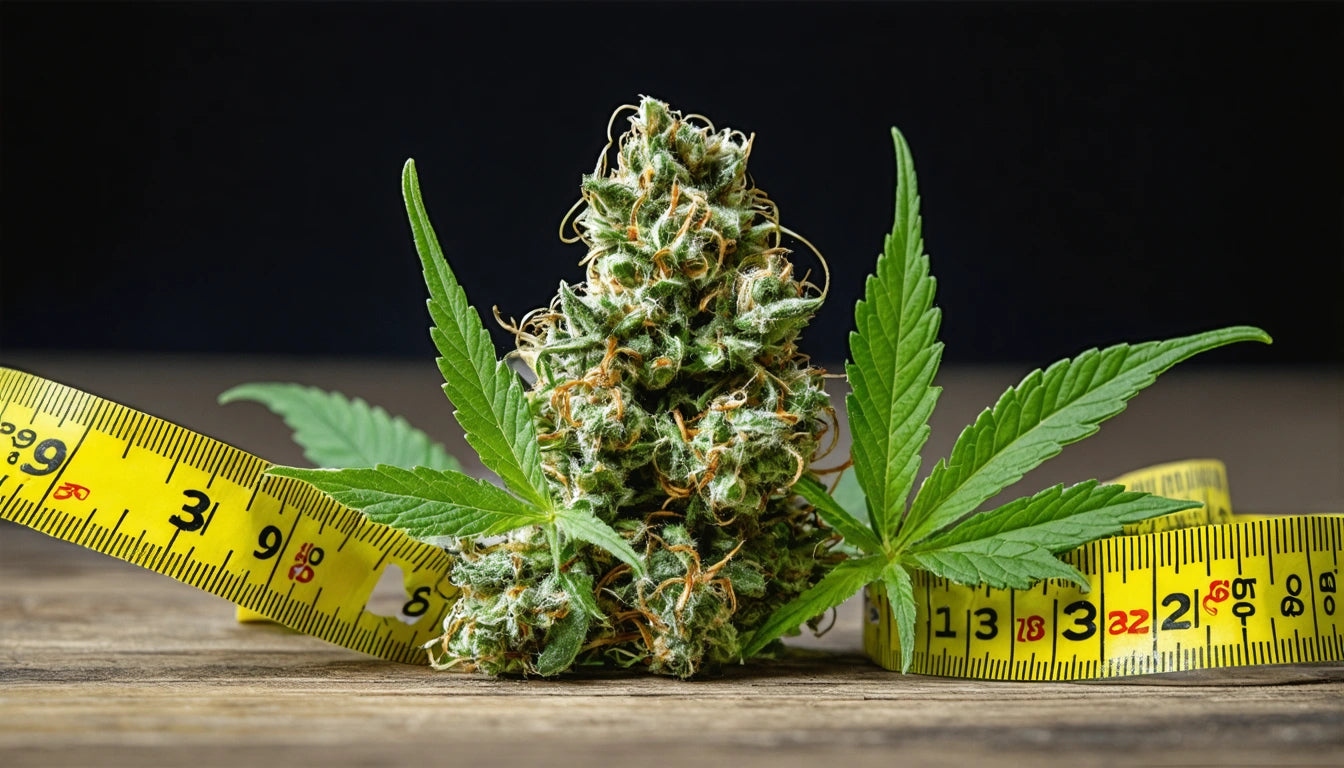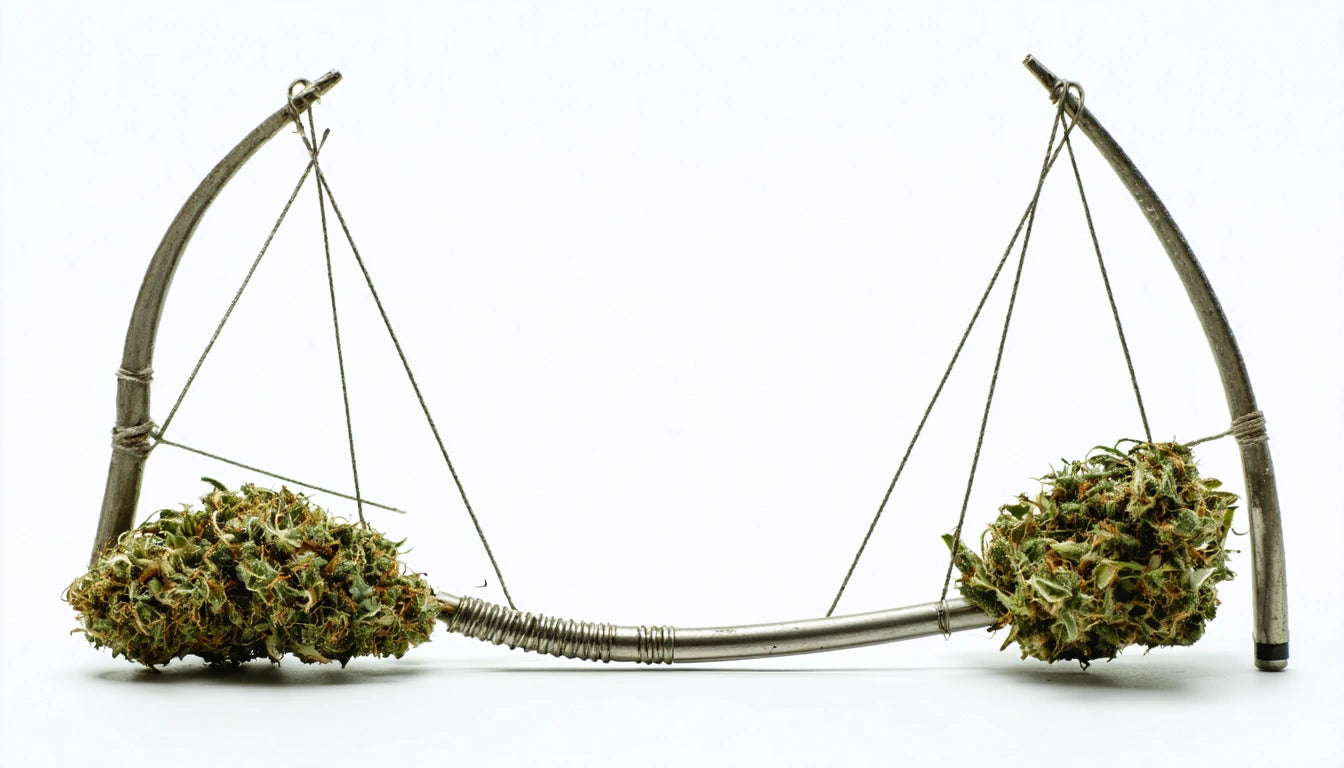Table of Contents
- Historical Appearance: What Cannabis Looked Like in the 60s vs. Today
- Identifying Cannabis Plants: Key Visual Characteristics
- Cannabis Leaf Appearance: From Seedling to Mature Plant
- Male vs. Female Cannabis Plants: Visual Differences
- Unusual Cannabis Variations: Albino Plants and Rare Phenotypes
- Preserving the Visual Appeal of Cannabis Through Proper Storage
Understanding the Appearance of Cannabis Plants and Leaves Through the Decades
The cannabis plant has undergone significant visual evolution over decades of cultivation and selective breeding. Understanding what cannabis plants look like helps growers, consumers, and curious individuals identify legitimate products and plants. This visual guide explores cannabis appearance from the 1960s to today, covering everything from leaf structure to gender differences.
Historical Appearance: What Cannabis Looked Like in the 60s vs. Today
Cannabis in the 1960s looked noticeably different from modern varieties. Plants were typically taller, lankier, and less dense in bud structure. What cannabis looked like in the 60s often featured:
- Height averaging 8-15 feet for outdoor plants
- Lower THC content (typically under 5%)
- Looser, less compact buds
- More pronounced stems and seeds
- Natural green coloration with minimal purple or orange hues
Today's cannabis plants reflect decades of selective breeding for potency, appearance, and growing efficiency. Modern plants typically display denser buds, higher trichome production, and a wider range of colors from deep purple to vibrant orange.
Identifying Cannabis Plants: Key Visual Characteristics
What does a marijuana plant look like? Cannabis plants have several distinctive features that make them recognizable:
Growth Structure
Cannabis plants typically grow in a Christmas tree-like shape with a central cola and symmetrical branching. As detailed in this visual guide to identifying marijuana plants, the plant's structure becomes more pronounced during the vegetative stage.
Stem Characteristics
Cannabis stems are sturdy, often developing a woody texture as they mature. They typically feature alternating nodes where branches and leaves emerge.
Cannabis Leaf Appearance: From Seedling to Mature Plant
What does a cannabis leaf look like? The iconic cannabis leaf is perhaps the most recognizable part of the plant.
Seedling Leaves
Cannabis seedlings first produce a pair of round cotyledon leaves, followed by the first true leaves which typically have just a single leaflet or three leaflets with serrated edges.
Mature Fan Leaves
Mature cannabis fan leaves display the classic serrated edges and palmate structure. This guide on identifying cannabis leaves explains that mature plants typically produce leaves with 5-9 finger-like leaflets, though some varieties can produce up to 13.
The leaf color ranges from light to dark green, with some varieties showing purple, red, or even blue hues depending on genetics and growing conditions. Maintaining optimal storage conditions with humidity control packs for cannabis preservation helps retain these natural colors after harvest.
Male vs. Female Cannabis Plants: Visual Differences
Understanding what a female marijuana plant looks like compared to a male plant is crucial for cultivation. This visual guide to identifying male cannabis plants outlines key differences:
Female Plant Characteristics
- White pistils (hair-like structures) emerging from calyxes
- Teardrop-shaped bracts at nodes
- More compact growth pattern
- Higher trichome production
- Develops dense flower clusters (buds)
Male Plant Characteristics
- Pollen sacs that resemble small balls
- No pistils or hairs
- Often taller and less bushy
- Fewer trichomes
- Matures faster than females
Female plants are prized for their cannabinoid-rich flowers, while males are typically removed from growing operations unless being used for breeding purposes.
Unusual Cannabis Variations: Albino Plants and Rare Phenotypes
Beyond typical appearances, cannabis can display unusual characteristics. One question many enthusiasts ask is: can plants be albino? The answer is yes, though true albino cannabis plants are extremely rare.
Albino Cannabis
Albino cannabis plants lack chlorophyll, appearing white or very pale. They rarely survive to maturity without special care, as chlorophyll is essential for photosynthesis. Most white-appearing cannabis is actually due to extreme trichome production rather than true albinism.
Medical Cannabis Appearance
What does medical marijuana look like compared to recreational varieties? Visually, there's no consistent difference. Medical cannabis encompasses many strains with varying appearances. The distinction lies in growing standards, testing protocols, and intended therapeutic applications rather than visual characteristics.
Preserving the Visual Appeal of Cannabis Through Proper Storage
The appearance of cannabis changes after harvest, with proper curing and storage being essential to maintain visual appeal. Improper storage can lead to color degradation, trichome damage, and overall deterioration of the plant's aesthetic qualities.
To preserve the natural appearance of cannabis, humidity control is crucial. Using specialized humidity control solutions helps maintain the optimal moisture level that preserves trichomes, colors, and overall structure of the plant material.
Understanding what cannabis plants look like throughout their lifecycle helps cultivators identify healthy growth, determine gender, and harvest at peak visual appeal. For consumers, this knowledge aids in recognizing quality products and appreciating the plant's natural diversity and beauty across its many varieties and growth stages.











Leave a comment
All comments are moderated before being published.
This site is protected by hCaptcha and the hCaptcha Privacy Policy and Terms of Service apply.